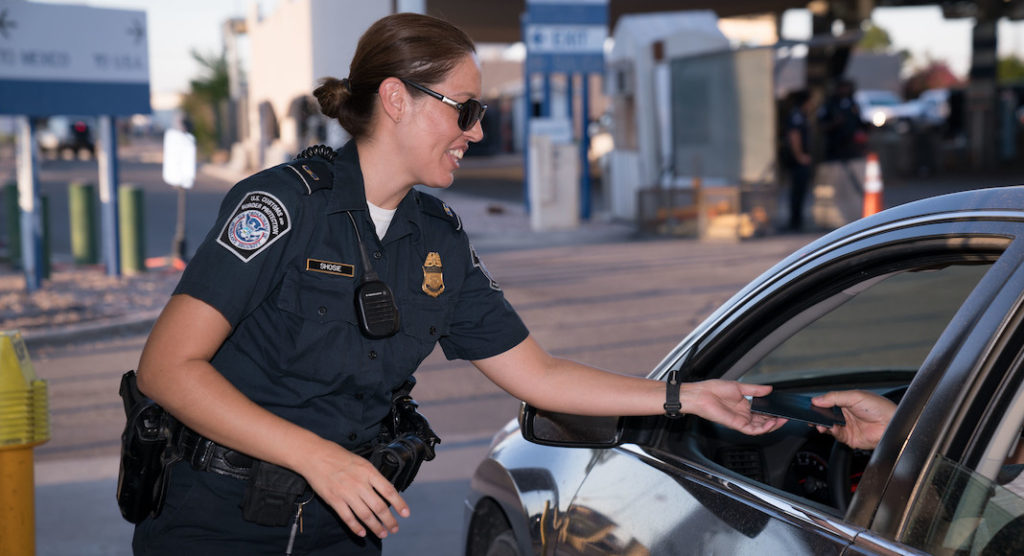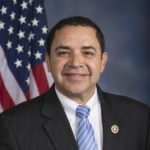
Texas Border Business
AUSTIN – U.S. Senator John Cornyn (R-TX) and U.S. Representative Henry Cuellar (TX-28) led a letter to Acting Secretary of Homeland Security Chad Wolf expressing concern with continued travel restrictions at our southern ports of entry and demanding a plan to restore normal operations. U.S. Representatives Will Hurd (TX-23), Vicente Gonzalez (TX-15), Michael McCaul (TX-10), and Ann Kirkpatrick (AZ-02), along with Sen. Kyrsten Sinema (D-AZ), all joined the letter.

They wrote: “We fully appreciate the difficult balance that DHS must strike between protecting its officers and the public against COVID-19, and facilitating the economic and social needs of border communities. However, DHS has provided little public insight into how it weighed the costs and benefits of these extended travel restrictions. We worry the longer lines at ports of entry and inability to social distance in pedestrian lanes may actually increase the risk of spreading COVID-19, and DHS has not provided sufficient information to show how they are mitigating these risks.
“Furthermore, DHS has not publicly articulated a plan for returning to normal operations or set forth any benchmarks that must be reached before the travel restrictions can be partially relaxed or completely lifted. While we understand that DHS is currently forced to adapt to a constantly-changing situation, all four Southwest border states—Texas, New Mexico, Arizona, and California—have developed phased reopening plans. DHS should develop the same type of plan to better provide local communities with a basic idea of what to expect in the coming months.”

“Finally, DHS has not adequately communicated with local governments, businesses, and the general public about the travel restrictions. Although CBP has engaged in local outreach efforts, many of those efforts seem to have focused on “essential” businesses. So-called “non-essential” businesses—which comprise critical parts of the local economies—are often left under-informed about why the restrictions have been imposed and when they may be lifted.”
The signed letter is here and full text is below.
October 1, 2020
Acting Secretary Chad F. Wolf
Office of the Executive Secretary
MS 0525
Department of Homeland Security
2707 Martin Luther King Jr Ave SE
Washington, DC 20528-0525
Dear Acting Secretary Wolf:
We are writing to inquire about the status of travel restrictions at land ports of entry along the United States-Mexico border and the Department’s plan moving forward. We fully appreciate the difficult balance the Department of Homeland Security (DHS) must strike between public health concerns and social and economic equities. As we enter the seventh full month of restrictions, it is critical that DHS develop a plan for returning to normal operations and communicate this plan and necessary benchmarks that must be met to local stakeholders in our border communities.
Pursuant to a mutual agreement with the Government of Mexico, citing the risk of continued transmission and spread of COVID-19 between the United States and Mexico, DHS suspended normal operations at land ports of entry along the United States-Mexico border on March 20, 2020, with exceptions for essential travel. These measures were extended on April 20, May 19, June 16, July 16, August 14, and most recently September 18. On August 19, U.S. Customs and Border Protection (CBP) announced that it would decrease vehicle and pedestrian lanes during peak “non-essential” travel times to reduce the risk of further spread of COVID-19. Although CBP can try to prioritize essential traffic, the agency acknowledges these actions could negatively impact essential travelers. Furthermore, CBP has not laid out a clear plan to communicate these changes to travelers or performed outreach to local communities.
Border communities in our states shoulder disproportionately high economic and social costs as a result of these travel restrictions. Pre-pandemic, Mexican citizens who made short day trips to the United States to shop accounted for an outsized share of the local economy in those communities. For example, the Federal Reserve Bank of Dallas estimates that 40 to 45 percent of Laredo’s retail activity was attributable to Mexican nationals. Arizona gets more international visitors from Mexico than any other nation. In 2019, according to the Arizona Office of Tourism, those visitors from Mexico spent an estimated $1.5 billion. Data from the Central Bank of Mexico show that United States has historically run a surplus in cross-border shopping with Mexico, meaning that Mexican citizens typically spend more in the United States than U.S. citizens spend in Mexico. It is unlikely that increased spending by U.S. consumers will make up for lost spending by Mexican consumers in the border region in the long run. The travel restrictions will have an especially pronounced effect during the holidays: data show that Mexican cross-border shoppers sharply increase their purchasing during the months of November and December, spending hundreds of millions of dollars along the border and even in cities such as San Antonio.
Further complicating the financial situation for local governments along the border is the steep drop in revenue from the international bridges that connect Mexican and U.S. cities over the Rio Grande. For example, the McAllen-Hidalgo International Toll Bridge Fund has reported a drop in more than $2 million in revenues relative to budget through July 31, 2020, and additional revenue losses are expected. Losses like this cut into the funds that cities including McAllen and Hidalgo receive from the toll bridges, and mean that they have less money to support health, public safety, and other essential functions.
Harder to quantify is the effect on the social fabric of border communities. In many of these communities, families may live on both sides of the border. People frequently travel back and forth to access medical care and educational opportunities. U.S. citizen parents may turn to daycare providers on the Mexican side of the border to care for their children while they work. Now, at a time when daycares are closed in many U.S. cities, essential workers struggle to balance work and childcare obligations. Reports indicate that U.S. citizens’ visits to doctors’ and dental services in Mexico have dropped sharply, which is concerning considering the high prevalence of diabetes in some communities along the border. In places that often operate as one city—two countries—the travel restrictions have caused significant hardships.
Again, we fully appreciate the difficult balance that DHS must strike between protecting its officers and the public against COVID-19, and facilitating the economic and social needs of border communities. However, DHS has provided little public insight into how it weighed the costs and benefits of these extended travel restrictions. We worry the longer lines at ports of entry and inability to social distance in pedestrian lanes may actually increase the risk of spreading COVID-19, and DHS has not provided sufficient information to show how they are mitigating these risks.
Furthermore, DHS has not publicly articulated a plan for returning to normal operations, or set forth any benchmarks that must be reached before the travel restrictions can be partially relaxed or completely lifted. While we understand that DHS is currently forced to adapt to a constantly-changing situation, all four southwest border states—Texas, New Mexico, Arizona, and California—have developed phased reopening plans. DHS should develop the same type of plan to better provide local communities with a basic idea of what to expect in the coming months.
Finally, DHS has not adequately communicated with local governments, businesses, and the general public about the travel restrictions. Although CBP has engaged in local outreach efforts, many of those efforts seem to have focused on “essential” businesses. So-called “non-essential” businesses—which comprise critical parts of the local economies—are often left under-informed about why the restrictions have been imposed and when they may be lifted.
We respectfully ask that DHS take the following actions to lay out a clear path forward and report back to our offices. These steps will allow our southern border communities to better prepare and adapt as they continue to face the hardships caused by the pandemic:
1. Provide details on any cost-benefit analysis DHS has done when deciding to extend existing travel restrictions or impose new restrictions along the southwest border.
2. Provide the data used by CBP to specifically determine peak “non-essential” travel days and times at ports of entry.
3. Develop and publicly articulate a detailed plan, including benchmarks that must be reached, for land ports of entry along the southwest border to return to normal operations.
4. In consultation with local stakeholders—both “essential” and “non-essential”—develop a strategy to effectively communicate any changes to DHS travel restrictions with these groups.
We appreciate the hard work the Department of Homeland Security has undertaken to protect Americans’ safety in this challenging environment. We remain committed to ensuring that DHS and CBP have the necessary resources to protect the health of the public and agency staff, and look forward to continuing to work with you as we respond to the COVID-19 threat.
Sincerely,













